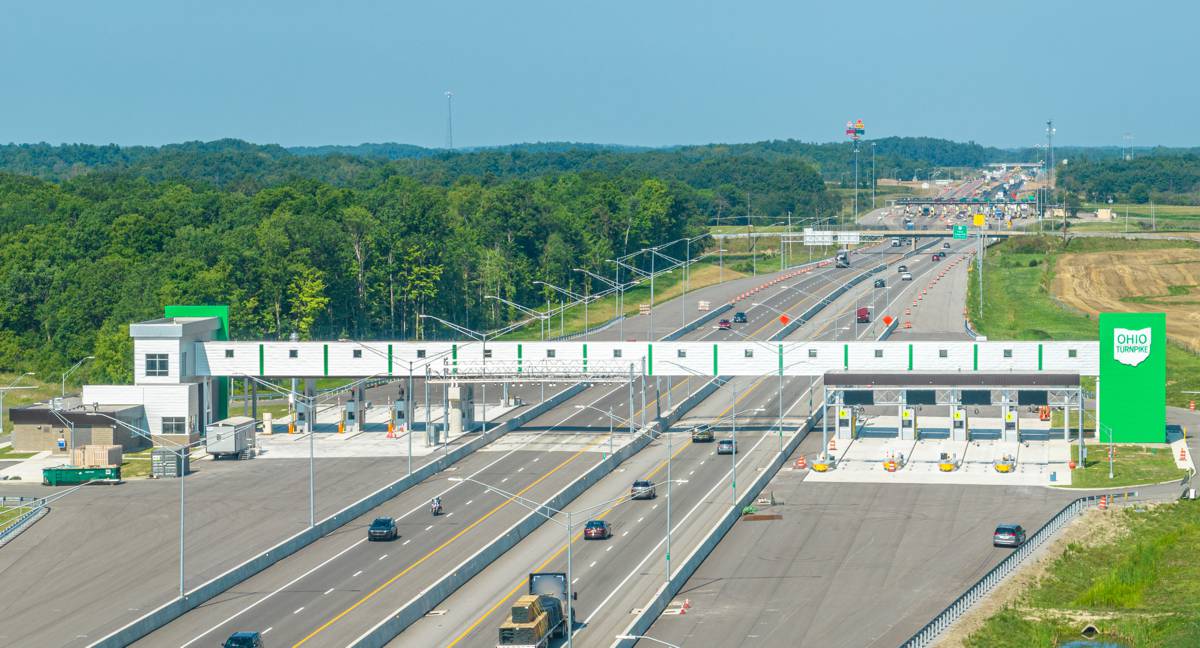Cheshire’s new smart motorway safety barrier nears completion
Last 4-tonne concrete blocks lifted into place on M6
A new 20-mile-long concrete safety barrier on the M6 in Cheshire is nearing completion as part of a £274 million project to upgrade the route to a smart motorway.
The Highways England scheme between junction 16 at Crewe and junction 19 at Knutsford will see the hard shoulder converted to a permanent extra lane, and new variable speed limits will help to tackle congestion and keep traffic flowing.
Around 5,000 concrete blocks have been lifted into place, using giant claws on an excavator, to create the new safety barrier in the central reservation. Each block is six metres long and weighs around four tonnes – equivalent to the weight of two 4×4 vehicles.
Contractors have already completed the stretch of new barrier between junctions 17 and 19, and are now working on the hard shoulder.
The remaining section of barrier between junctions 16 and 17 is due to be finished in the next few weeks, with some overnight closures required to alter the temporary road layout and move the construction area to the hard shoulder.
Mike Bull, Highways England’s senior smart motorway manager for the North, said: “The smart motorway upgrade on the M6 is one of the biggest construction projects currently taking place in the North, and I’m pleased we’re now reaching a major milestone with the new safety barrier.”
“When the smart motorway goes live, the 118,000 drivers who use the route every day will benefit from an extra lane in each direction – increasing capacity by a third. We’ll also be introducing variable speed limits to keep traffic moving at a steady speed and tackle the stop/start conditions and tailbacks caused by sudden braking.”
“We are doing everything we can to minimise disruption while the work takes place, keeping the same number of lanes open in each direction during the day, and will only close parts of the motorway overnight when traffic levels are much lower.”
The new safety barrier will reduce the risk of vehicles crossing onto the opposite carriageway in collisions and is likely to require fewer repairs, cutting the need for lane closures.
The concrete blocks are created by pouring concrete into an upside down mould. They take up to 18 hours to set before being struck from the mould, ready for delivery.
Around 300 people are currently working on the project to upgrade the M6 to a smart motorway through Cheshire. Work has also been taking place to create new emergency areas, install foundations for overhead gantries, improve drainage, repair bridges and carry out resurfacing.
When the scheme is complete, 258 electronic signs will be used to alert drivers to changes in the speed limit, lane closures and incidents ahead.
A total of 70 CCTV cameras will also be installed to provide 100% coverage of the route and allow Highways England’s traffic officers and the emergency services to respond quickly to incidents. And 18 emergency areas will be built to provide drivers with a safer place to stop if they break down.
A similar smart motorway scheme on a stretch of the M62 in West Yorkshire, which was completed in 2013, has resulted in commuters saving around 30 minutes each week.
The southbound carriageway on the M6 will be closed overnight between junctions 18 and 17 on Friday 11 August, and the northbound carriageway will be closed overnight between the same junctions on Saturday 12 August.
The closures will take place between 10pm and 8am as part of the work to move the construction area to the hard shoulder, and a clearly-signed diversion will be in place.
The Cheshire smart motorway project is due to be completed by the end of March 2019.
More details on the scheme, including information about planned overnight closures, are available at www.highways.gov.uk/M6j16-19smart.
















